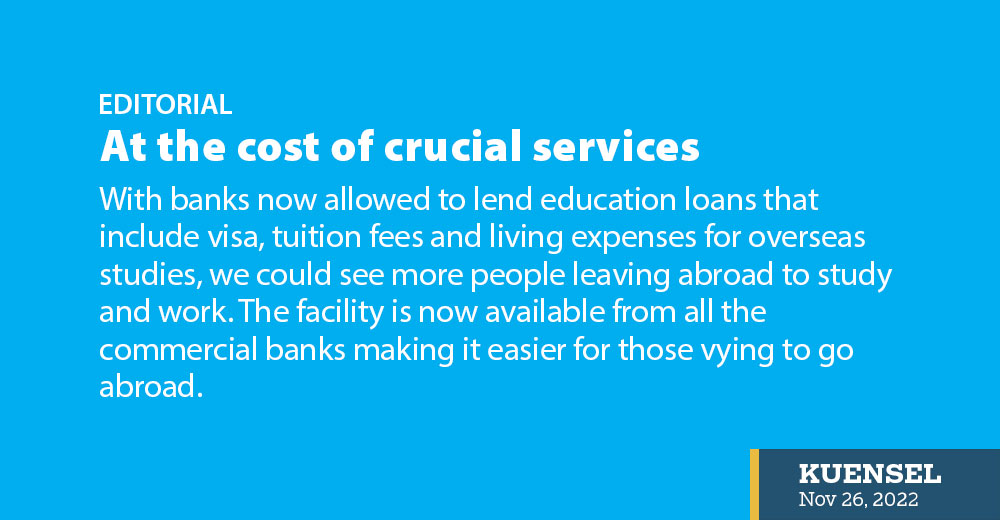With banks now allowed to lend education loans that include visa, tuition fees and living expenses for overseas studies, we could see more people leaving abroad to study and work. The facility is now available from all the commercial banks making it easier for those vying to go abroad.
There is a dearth of human resources in the rich countries. In the US alone, there are more job openings than candidates. As of November 11, the US government stated that there are job openings for about 10 million people. Canada wants 500,000 immigrant workers by 2025 while Australia has a steady target of 160,000 a year as of 2021 in the face of labour shortage.
The trend today is that Bhutanese leave to study where they could take their partner or spouse who could work limited hours. If the facility of immigrant workers is extended to Bhutan, there could be many leaving. It will be a good opportunity for the huge unemployed group, especially the young. By now every Bhutanese has seen or experienced the benefits of having a son or a daughter working or studying in Australia or the US.
The government is exploring opportunities for Bhutanese in Australia without having to go through a study programme, like the working holiday and training visa and the government standing guarantee for financial support. These are other openings if the two governments could come to an agreement.
The opportunities are many and the window is big considering both the pull and push factor. The stories of how remittance is changing lives is encouraging Bhutanese to try their luck. From Haa to Thrimshing, Laya to Sarpang, every family or the educated children wish to live and work in a foreign land.
Many will leave. However, who leaves and when is important in our human resource planning. Some jobs or vacancies could be filled over night, but there are others that will compromise service – health and education is one.
At the national referral hospital, the shortage is being felt by the sick. For instance, the 36-bedded ward needs at least six nurses. On the night shift there are four. There are six serious patients and the doctor on duty instructs the nurses to attend to the six if they are overwhelmed.
At a government school, students are baking cakes for their teacher’s “farewell”. The syllabus is covered, says a student when asked who will teach them. The teacher was kind enough to wait until the academic year. Many had not.
Back at the national referral hospital, the few specialists we have are also reportedly leaving. In some departments there will be none to fill the gap. New specialists will be trained and recruited, but it takes time. In health, service or treatment improves when two or more specialists discuss a health issue. Second or third opinion would go missing when specialists are scarce.
In short, if we are not mindful, we would be playing with the health of the people and the future of our children. How do we stop people from leaving? This is the burning question. A new pay structure is being discussed, but it is receiving lukewarm response from would-be beneficiaries.
If money is the reason for those leaving, we have to relook into what we give them. We cannot double the salary for all the civil servants (doctors and specialists are civil servants). But we need to relook into how much and why we pay what we pay to our “civil servants.”


